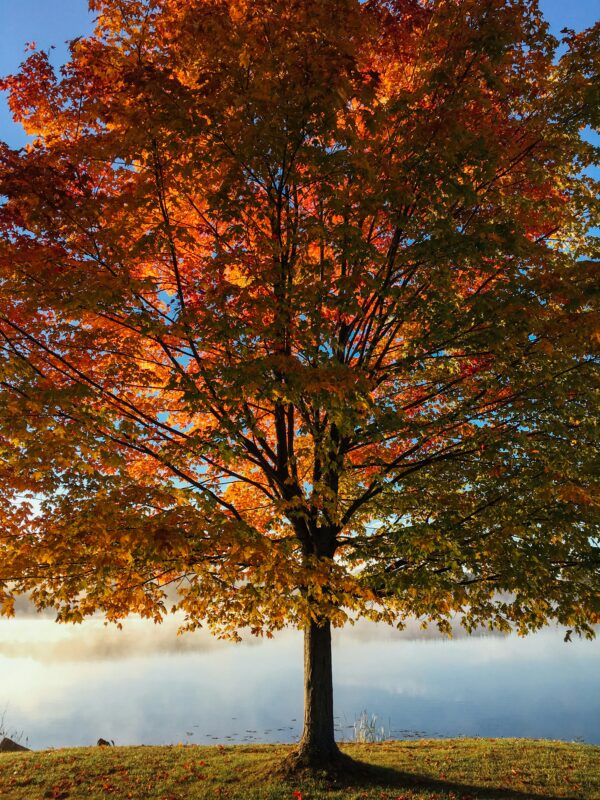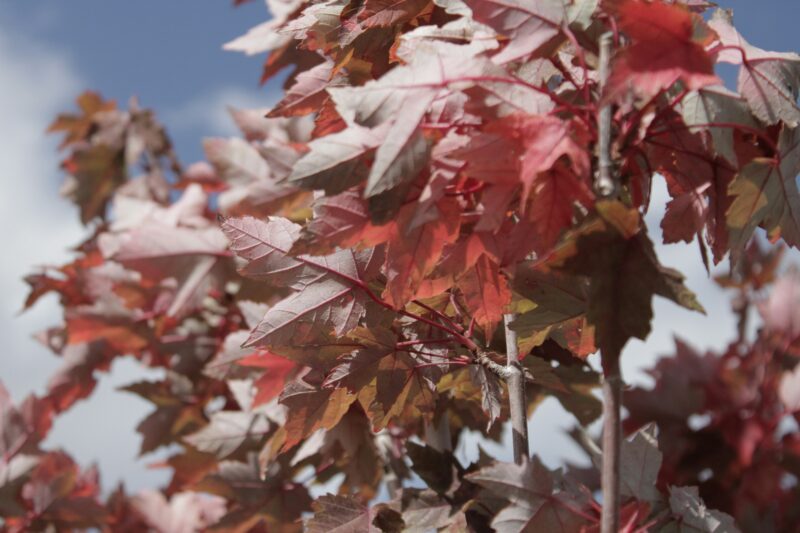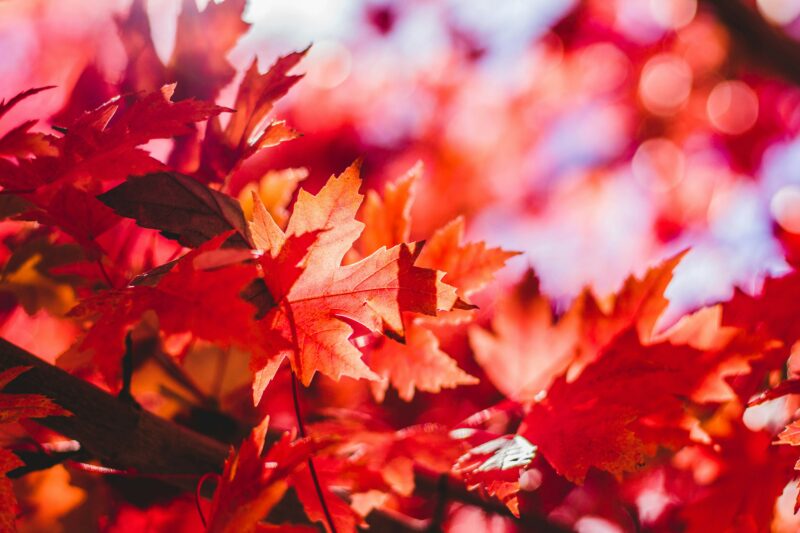Red Maple Tree.
The Red Maple tree (Acer rubrum) is indeed a native species in the United States, known for its vibrant red foliage in the fall and adaptability to a variety of soils and climates. These trees are an integral part of many North American ecosystems, providing essential habitat and food for wildlife, from birds to insects.

Confusion exists. A “Red Maple tree” is not always what it seems.
However, there is often confusion between the native Red Maple and the introduced Norway Maple (Acer platanoides), particularly those with bright red leaves, which are commonly planted in urban landscapes. One popular variety of Norway Maple is ‘Crimson King,’ known for its deep red or maroon leaves that persist throughout the growing season. While these trees are visually striking, they are not native to the U.S. and can actually be harmful to local ecosystems.

Unlike the native Red Maple, Norway Maples are invasive. They outcompete native trees by creating dense shade that inhibits the growth of understory plants and other trees. Generally, this can lead to a decline in biodiversity, as fewer plant species mean fewer habitats and food sources for native wildlife. Furthermore, Norway Maples tend to have shallow root systems that can dominate the soil, making it difficult for other plants to thrive.
Choosing the correct, native Red Maple is crucial for habitat restoration and promoting a healthy ecosystem. Native Red Maples not only support local wildlife but also help maintain the balance of the environment. By planting native species like the Red Maple, you’re contributing to a sustainable future, ensuring that our landscapes remain diverse and vibrant for generations to come.
Differentiating between Red Maple trees + Norway Crimson King:
TLDR version: during summer, native Acer rubrum has bright green leaves. They only turn red in autumn.
Here’s how you can visually differentiate between the native Red Maple (Acer rubrum) and the invasive Norway Maple (Acer platanoides):
Red Maple Tree Leaf Shape and Structure:
- Acer rubrum (Red Maple):
- Leaves: Red Maple leaves have 3 to 5 lobes with relatively shallow, V-shaped sinuses (the spaces between the lobes). The edges are serrated, giving the leaves a somewhat jagged appearance. The leaves are typically a lighter green on top and paler underneath.
- Fall Color: The leaves turn vibrant shades of red, orange, or yellow in the fall. Contrarily, during the spring and summer, native Red Maple tree leaves are a brilliant green.
- Acer platanoides (Norway Maple):
- Leaves: Norway Maple leaves have 5 to 7 lobes with more deeply cut sinuses, giving them a broader and more symmetrical appearance. The lobes are blunter, and the leaves have a more uniform, dark green color on both sides.
- Fall Color: Norway Maple leaves tend to turn yellow in the fall, although some varieties, like ‘Crimson King,’ maintain a deep red or maroon color throughout the growing season.
Bark and Twigs:
- Acer rubrum (Red Maple):
- Bark: The bark of a young Red Maple is smooth and light gray. As the tree ages, the bark becomes more furrowed with rough, scaly ridges.
- Twigs: The twigs of Red Maple are reddish and have small, rounded, red buds.
- Acer platanoides (Norway Maple):
- Bark: The bark of Norway Maple is grayish-brown and has shallow, regularly spaced ridges, even on older trees. It can look quite similar to the bark of Sugar Maple.
- Twigs: The twigs of Norway Maple are stout and have a milky sap that exudes when broken. The buds are large, greenish-red, and more pointed.
Other Key Identifiers:
- Milky Sap: One of the easiest ways to distinguish Norway Maple from Acer rubrum is by breaking a leaf or stem. Norway Maple will ooze a milky white sap, while the native species will not.
- Samara (Seed Pods): The seed pods, or samaras, of the Red Maple are small and typically turn red in the spring. Norway Maple samaras are larger and tend to stay green longer.
By observing these characteristics, you can confidently identify and choose the native Red Maple straightaway. Certainly, this supports your efforts in habitat restoration and fostering a healthier ecosystem.

So, next time you’re considering planting a maple tree, make sure to choose the native Acer rubrum. It’s a small decision that altogether makes a big impact on our eco-future!
How to hire Jessecology for your native tree planting project:
We’d love to meet you! Certainly, our team can plant some native trees for your Saratoga, Albany or Niskayuna region home or business. Please fill out the “Start Your Project” form and we’ll be in touch soon.
